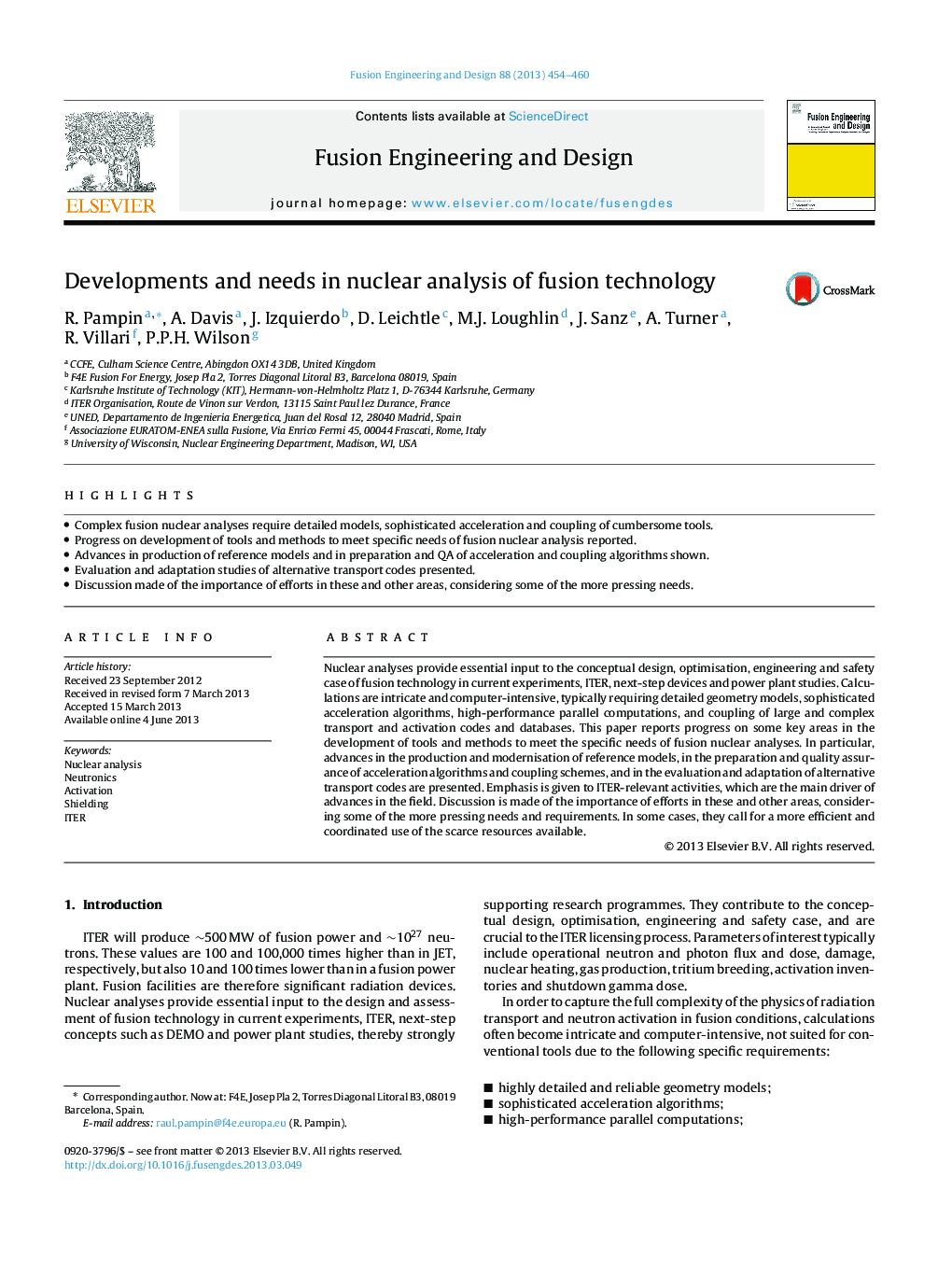| Article ID | Journal | Published Year | Pages | File Type |
|---|---|---|---|---|
| 271699 | Fusion Engineering and Design | 2013 | 7 Pages |
•Complex fusion nuclear analyses require detailed models, sophisticated acceleration and coupling of cumbersome tools.•Progress on development of tools and methods to meet specific needs of fusion nuclear analysis reported.•Advances in production of reference models and in preparation and QA of acceleration and coupling algorithms shown.•Evaluation and adaptation studies of alternative transport codes presented.•Discussion made of the importance of efforts in these and other areas, considering some of the more pressing needs.
Nuclear analyses provide essential input to the conceptual design, optimisation, engineering and safety case of fusion technology in current experiments, ITER, next-step devices and power plant studies. Calculations are intricate and computer-intensive, typically requiring detailed geometry models, sophisticated acceleration algorithms, high-performance parallel computations, and coupling of large and complex transport and activation codes and databases. This paper reports progress on some key areas in the development of tools and methods to meet the specific needs of fusion nuclear analyses. In particular, advances in the production and modernisation of reference models, in the preparation and quality assurance of acceleration algorithms and coupling schemes, and in the evaluation and adaptation of alternative transport codes are presented. Emphasis is given to ITER-relevant activities, which are the main driver of advances in the field. Discussion is made of the importance of efforts in these and other areas, considering some of the more pressing needs and requirements. In some cases, they call for a more efficient and coordinated use of the scarce resources available.
